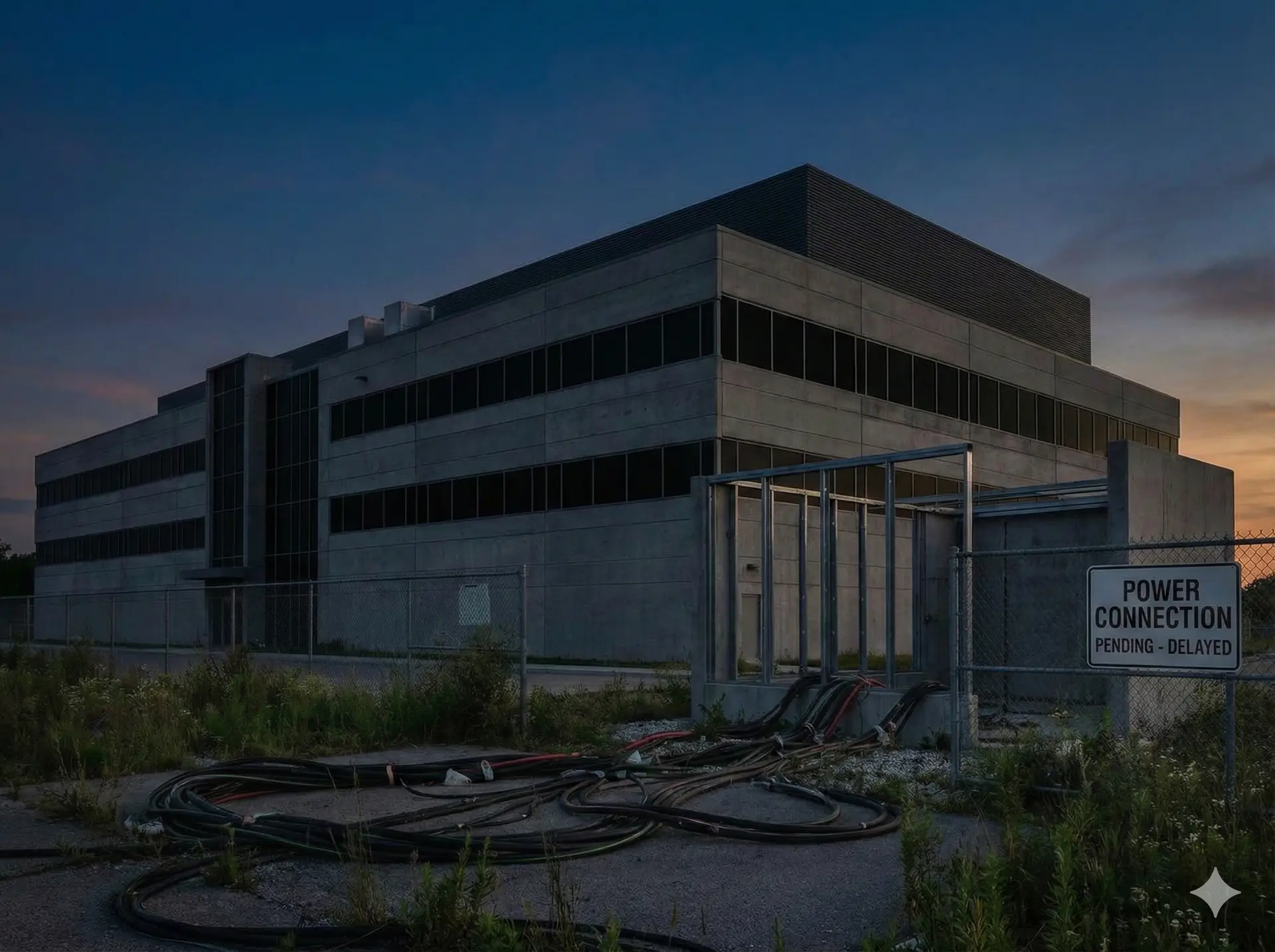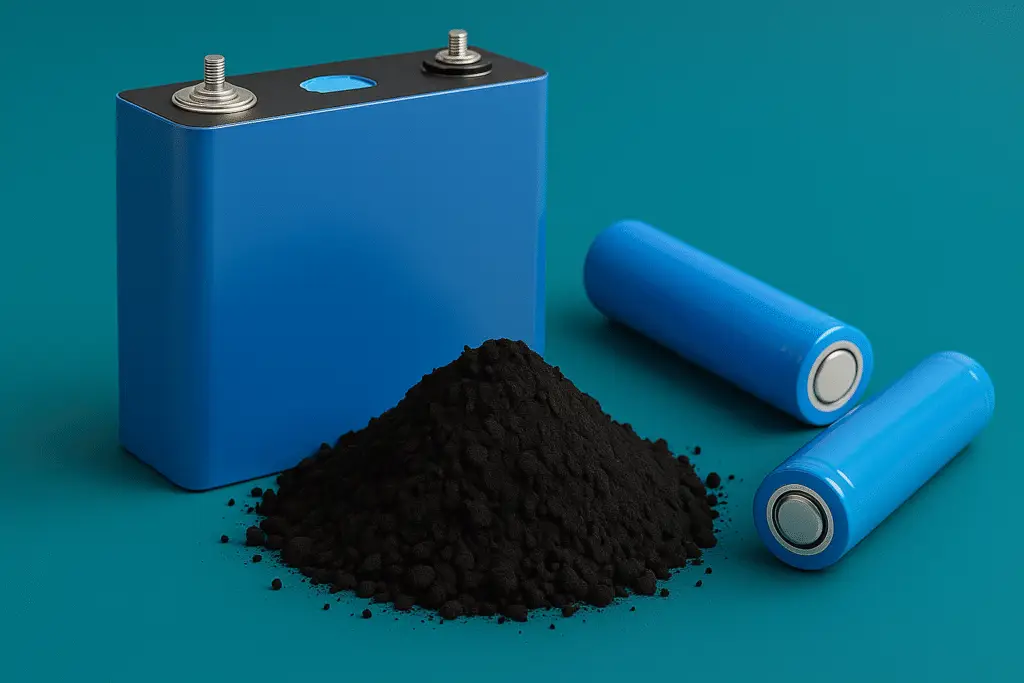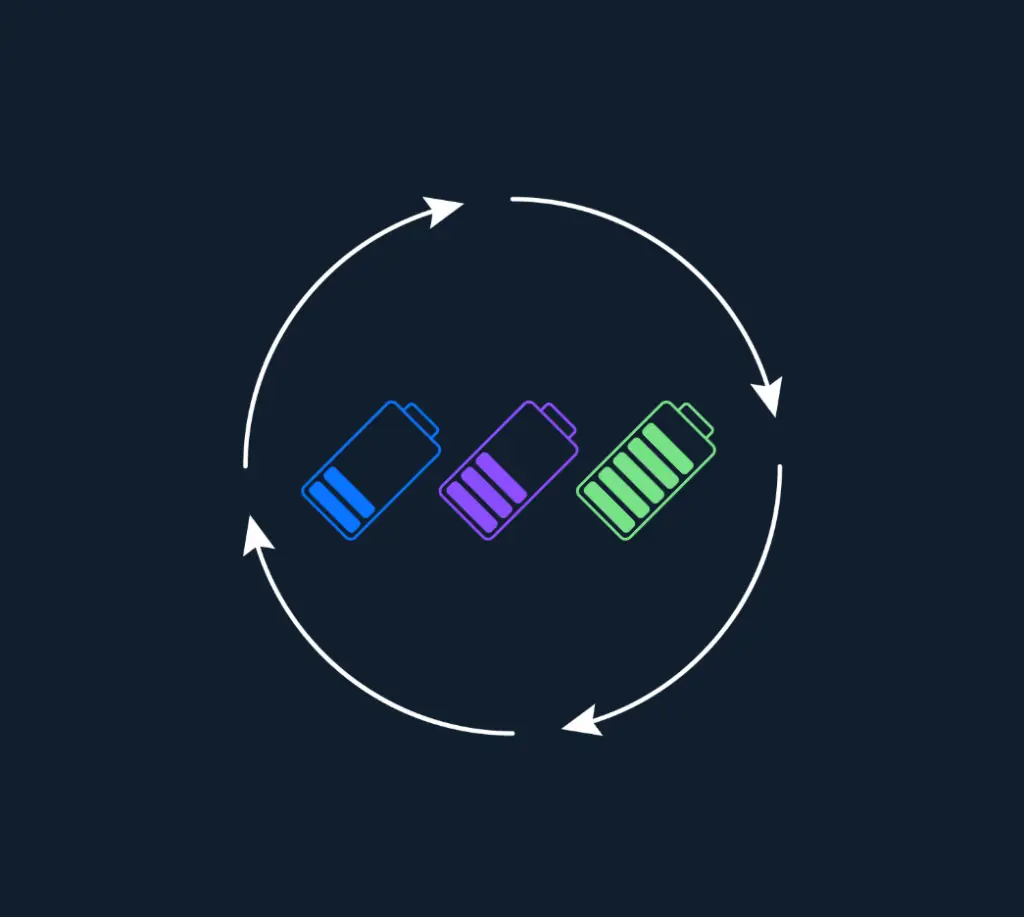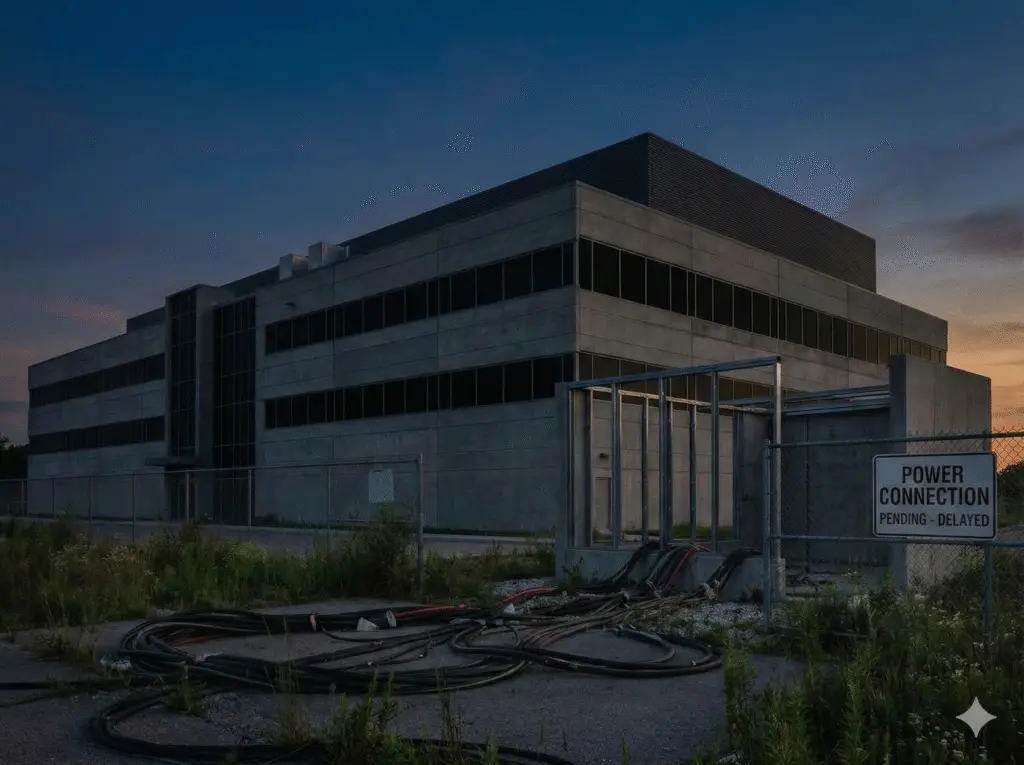Traditional solutions to add capacity, such as building new power plants or upgrading the grid, would take years to complete. With rapid AI demand growth happening now, faster, more flexible power solutions are urgently needed.
AI Is Scaling Faster Than the Grid
According to Morgan Stanley, global data center capacity is expected to grow six times by 2030, requiring nearly $3 trillion in capital investment by 2028. Hyperscalers like Google, Microsoft, Amazon, and Meta are expected to fund half of that internally, with the other $1.5 trillion coming from private credit markets and securitized finance. Yet while headlines focus on GPUs, servers, and real estate, the most important question is often overlooked: where will the power needed to run everything come from?
The amount of power needed for our AI aspirations is not trivial. Just to meet the U.S. demand for new datacenters, an additional 45 gigawatts (GW) of generation capacity will be needed – nearly 10% of current U.S. generation capacity. That is equivalent to building 23 Hoover Dams in just a few years. Yet of the projected $3 trillion in spending, almost none is allocated for power infrastructure.
Assuming power infrastructure does get the attention it needs (we wouldn’t get very far if it doesn’t), which solutions can actually meet the demands of mega-scale data centers?
Obvious Solutions Aren’t Enough
Large-scale power plant projects can take years to design, permit, and build. In today’s highly regulated power system with gigawatts of generation assets waiting in interconnection queues, even modest additions face regulatory bottlenecks and supply chain delays. Some proposed alternatives, like shutting down crypto mining operations or collocating datacenters with nuclear plants, are either too small in scale or too slow to deploy. On-site generation from sources like natural gas or small modular nuclear reactors (SMRs) can be faster to deploy than centralized, utility-scale projects, but they are often costly and face significant economic and logistical barriers. Natural gas turbines, for example, have order lead times up to seven years, and SMR projects have been canceled due to cost overruns. In terms of being relied on for near-term relief, their development timelines face too much uncertainty, not to mention often being politically or environmentally problematic as well.
When You Need Speed
Battery energy storage systems (BESS) are one of the few dispatchable solutions that can be deployed in months rather than years. They provide a flexible and modular way to store power during off-peak periods and discharge it during peak demand, helping to reduce strain on the grid and prevent outages. For data centers specifically, batteries can absorb excess supply from the grid or on-site generation when demand is low, then deliver steady, cost-controlled power when loads spike.
Battery’s buffering capability can also shield data centers from power quality issues such as voltage sags, frequency fluctuations, or short interruptions that could cause server downtime or equipment damage. Batteries can even complement fossil-fuel power plants or other generators in hybrid systems by handling rapid demand fluctuations, which allows generators to run at peak efficiency and avoid damage associated with running at low loads. Batteries can also play a crucial role in data center uninterrupted power supply (UPS) systems, ensuring that critical operations continue without interruption in the event of an all-out power outage.
Of Emerging Battery Types, Sodium-ion Stands Out
While lithium-ion has been the go-to battery for many use cases, it carries significant risks. It needs significant cooling to maintain stability and degrades with heavy use. Further, its reliability as a solution for global data centers is offset by the fact that its supply chain is controlled almost entirely by one country, meaning supply could be cut off at any time.
Among the non-lithium battery technologies available to address the power problem, sodium-ion batteries stand out with reliability, cost-effectiveness, and some unique performance advantages suited to data centers’ needs.
Sodium-ion batteries are much more tolerant of high temperatures, which in data centers with massive existing cooling loads, is a serious benefit. The batteries also are built to endure many more cycles due to enhanced ionic conductivity and resistance to plating – phenomena that cause degradation in lithium-ion batteries. The use of an aluminum current collector in sodium-ion batteries also avoids damage from overcharge or discharge to zero percent. These are capabilities that would otherwise cause critical damage and/or combustion risk in lithium-ion batteries. These distinctions position sodium-ion as a more reliable solution that brings the benefits of batteries without the drawbacks.
However, like their lithium-ion counterparts, there are a range of sodium-ion battery chemistry types, and not all of them tout safety, supply chain, or performance advantages. For instance, some sodium-ion battery types are safer than their lithium-ion counterparts but can still go into thermal runaway when exposed to high heat. Other types rely on cyanide or vanadium compounds which present their own toxicity challenges. But within sodium-ion is a nexus of safety, performance, and supply chain that simply isn’t possible with lithium.
Alsym’s Na-Series
At Alsym Energy, we are building a new generation of sodium-ion batteries, ones specifically designed to be non-flammable, high-performance, and built with globally abundant materials. The Alsym Na-Series is designed to meet the urgent power needs of datacenters, utilities, and commercial and industrial customers. Inside the Na-Series is our NFPP+ technology that combines safety, performance, and affordability, making it a key enabler of AI infrastructure without waiting years for new power plants or grid upgrades. If the AI industry wants to avoid becoming the next tech bubble, battery solutions like Alsym’s Na-Series can keep AI running safely, reliably, and sustainably, while the rest of the energy system catches up.










